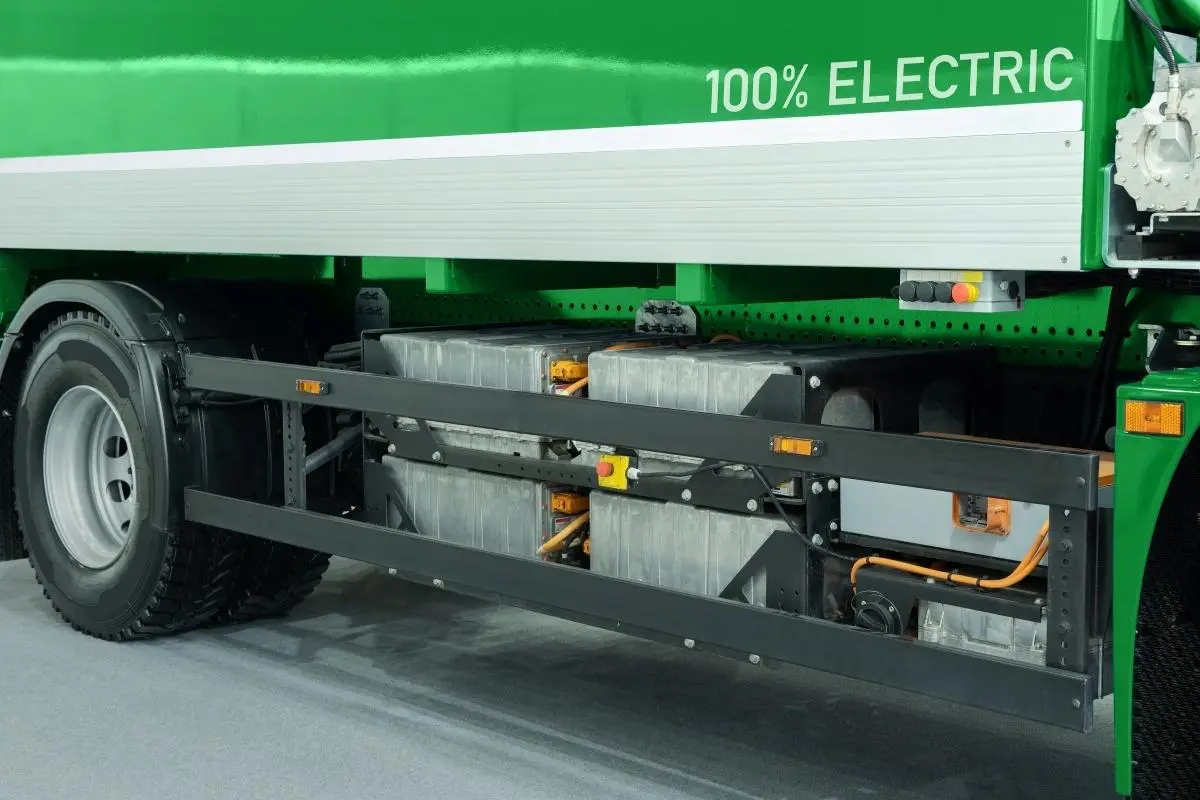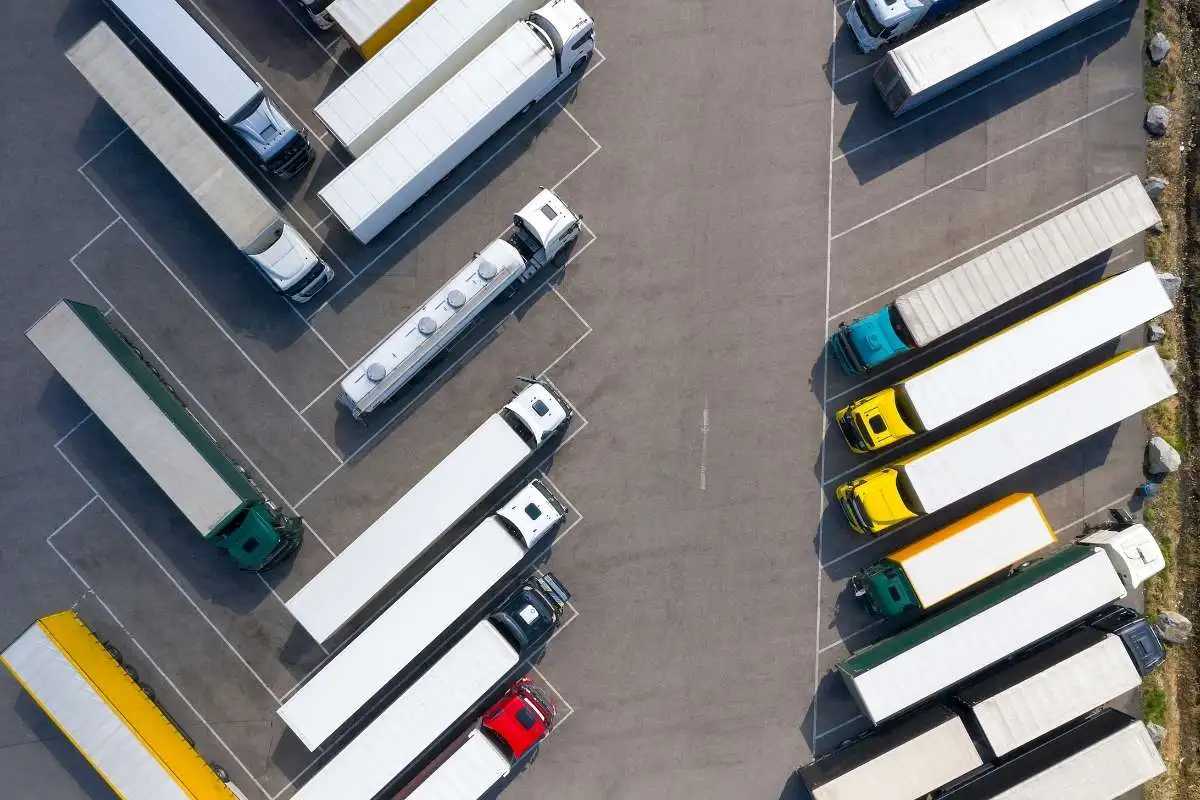The electrification of heavy goods vehicles is emerging as a major turning point in the decarbonization of road haulage. But beyond political announcements and industrial ambitions, a fundamental question remains unanswered: what is the real environmental impact of recharging electric trucks ? electric trucks? Contrary to popular belief, switching from diesel to electric does not automatically guarantee a neutral carbon footprint. Between the energy mix, battery manufacture, infrastructure installation and vehicle lifespan, every step counts.
Charging electric trucks: a real step forward for the climate
Reducing emissions from road transport inevitably involves transforming fleets. In this respect, electric electric trucks a credible solution, provided we understand their environmental impact.
Fewer direct emissions, greater control over the life cycle
The first obvious choice: an electric truck or electric bus emits no greenhouse gases when in use. Unlike a diesel truck, each kilometer driven emits no CO₂, NOx or fine particles on the exhaust pipe. In a context of low-emission zones (ZFE) that are multiplying in France, this advantage is becoming strategic for transport companies operating in urban or suburban areas.
But the impact doesn't stop there. What counts today islife-cycle analysis: from vehicle manufacture (especially batteries), to operation and recycling. And in this respect, the studies are clear: after 150,000 to 200,000 km, an electric truck becomes more virtuous than a diesel, even taking into account electricity derived partly from fossil sources. In France, where the electricity mix is low in carbon, this threshold is reached even more quickly.
The impact of the energy mix on recharging
The source of the electricity used for recharging is a decisive factor. In France, thanks to a mix dominated by nuclear power, hydroelectricity and renewables, recharging an electric truck is largely decarbonized, with average emissions of 50 g CO₂/kWh, compared with over 500 g/kWh in Germany or Poland.
In concrete terms, this means that recharging an electric truck in France can cut CO₂ emissions by a factor of 10 compared with an equivalent diesel truck. And all this without compromising on range, which today reaches 300 to 500 km depending on the model, with rapid recharging at high-power terminals.
{{cta-block}}
Battery manufacturing: a key issue to be put into perspective
If electric trucks are sometimes criticized, it's often because of theenvironmental impact of battery manufacture. It's true that this is an energy-intensive process, but the data must be analyzed rigorously and objectively.
Energy-intensive manufacturing that pays for itself in the long term
The production of a large-capacity lithium-ion battery - such as those used in electric trucks - generates on average between 5 and 10 tonnes of CO₂, depending on the origin of the materials and the energy used in the factories. This initial footprint is often singled out for criticism, particularly by advocates of combustion engines.
But this impact is quickly amortized thanks to the absence of emissions during the use phase. As soon as the truck exceeds 150,000 km, overall emissions become lower than those of a diesel equivalent. This threshold is further lowered when the electricity used for recharging comes from renewable or low-carbon sources - which is often the case in France.
What's more, the industry is making rapid progress. Many battery manufacturers, such as those involved in Renault Trucks or Volvo projects, are now using green electricity in their production processes, and reducing the impact of critical metals (such as cobalt or nickel) by optimizing supply chains.
Towards recycling and a second life for batteries
Another major advance is the recycling and second life of batteries. Contrary to popular belief, an electric truck battery is not scrapped once its range has been reduced. It can be reused in stationary applications - for energy storage in buildings or to stabilize a local grid.
Circular loop projects are multiplying in Europe. In France, initiatives such as those by Verkor and Northvolt already enable over 90% of the strategic materials contained in batteries to be recycled. Overall environmental impact is set to fall even further in the years to come.

Electric, diesel or hydrogen-powered trucks: who has the best environmental record?
Technology choices in the road haulage sector should not be made blindly. For companies, understanding the differences in environmental impact between diesel, hydrogen andbattery electric is essential to making strategic decisions in line with their CSR objectives.
Diesel: a technology on its last legs
Diesel trucks are still in the majority in France today. But it also represents one of the main sources ofgreenhouse gas (GHG) emissions in the transport sector. On average, a diesel HGV emits over 1,200 g of CO₂ per km driven, not to mention NOx and fine particle emissions, which are particularly harmful in urban environments.
Aside from the climate aspect, diesel is also coming under regulatory pressure restrictions in the EPZs, the scheduled end of sales of combustion-powered vehicles in 2040, increased energy taxation... In short, a solution that is less and less viable for the future.
Hydrogen: promising but still immature
Hydrogen-powered trucks are seductive because of their promise of zero tailpipe emissions and longer range than battery-electric vehicles. But in reality, its environmental impact depends heavily on the origin of the hydrogen used.
Currently, 95% of the hydrogen produced in Europe is of fossil origin ("grey" hydrogen), generating a carbon footprint sometimes greater than that of diesel. Only "green" hydrogen, produced by electrolysis fuelled by renewable energies, offers a truly virtuous balance. But it is still very marginal and costly.
What's more, the hydrogen sector still lacks infrastructure, and the costs of both vehicles and stations are very high. For companies, the TCO remains difficult to control, despite the subsidies available.
Battery electrics: the choice of today and tomorrow
In the face of these alternatives, the battery-electric HGV appears to be the most mature, available and ecologically viable solution in the short to medium term. With low-carbon recharging for the most part in France, high energy efficiency (three times greater than diesel), and steadily falling costs, it combines environmental performance with profitability.
Charging infrastructures: what's the environmental impact?
We often talk about electric vehicles, but less often about the infrastructure required to operate them. Yet charging stations, especially for heavy goods vehicles, play a key role in assessing the overall environmental impact of the sector.
A manageable environmental footprint
Building a charging station for electric trucks involves civil engineering, electrical equipment (transformers, HV cabling, technical cabinets), and the installation of the charging stations themselves, which can be very powerful (up to 1 MW per charging point). This process generates an initial carbon footprint, linked to materials, transport and energy consumption on site.
But this footprint pales in comparison with the environmental gains achieved over the lifetime of the plant. A well-sized station, used intensively over several years, can avoid hundreds of tonnes of CO₂ per year by replacing diesel trucks with electric models. What's more, pooling stations on logistics or motorway hubs optimizes their ecological profitability.
Towards more sustainable, intelligent stations
New-generation infrastructures are designed to reduce their own impact. The integration of recycled materials, energy management systems, local production of renewable energy (via solar roofs or photovoltaic shading), or buffer storage with second-life batteries: everything is designed to minimize the carbon footprint of the charging stations themselves.
This is exactly the approach championed by Bump, which is developing low-impact recharging projects in collaboration with fleet managers and logistics sites. The aim is to maximize energy efficiency, limit reliance on the national grid at peak times, and offer truly sustainable recharging.
So infrastructure is not a weak point in the electric model. Quite the contrary: they are a lever for environmental optimization, provided they are well thought-out from the outset and exploited to their full potential.
{{cta-block}}

Need to electrify your truck fleet?
Discover our solutions for deploying your charging station!


